The Knitting Circle Read online
Page 3
“A knitting circle?” Mary laughed. “But I can’t knit yet.”
Alice pointed at her morning’s work. “What do you call that?”
“I know, but—”
“These are women you should meet. All levels, they are. Each with something to offer. You’ll see.”
“I’ll think about it,” Mary said.
“Seven o’clock,” Alice said. “Right here.”
“Thank you,” Mary said, certain she would never join a knitting circle.
THE NEXT TUESDAY night, when she finished her second skein of yarn and, Mary realized, an entire scarf, she thought about what she would make next. The scarf’s stripes moved from that original purple all the way through blues and greens and browns and reds, ending in perfect pink. Excited, Mary wrapped it around her neck and went to show it off to Dylan.
He sat in bed, watching CNN. He was addicted to CNN, Mary decided.
“Ta-da!” she said, twirling for him.
“Look at you,” he said, grinning.
She came closer to show off the neat rows.
“Do you wear the needle in it like that?” he asked.
“Until I learn to cast off, I do.” She sat beside him, close.
“How will you learn such a thing?” Dylan whispered, stroking her arm.
Mary closed her eyes.
“I joined a knitting circle,” she said. “It starts tomorrow night.”
Dylan pulled her into his arms. It was dark out, the television their only source of light.
THE KNITTING SHOP looked different at night. The parking lot was very dark and the store seemed smaller against the sky and trees. Tiny white lights hung in each window, like bright stars. Mary could clearly see the women inside, sitting in a circle, needles in hand. She considered driving away, going home to Dylan, who would be in bed already watching the news, as if he might hear something that would change everything.
Sighing, Mary opened the door, her scarf with the needle dangling wrapped proudly around her neck. If Alice was surprised to see her, she didn’t act it.
“Find a spot and sit down,” Alice said. “Beth brought some real nice lemon cake.”
Mary sat on the worn sofa beside a woman around her own age, with long red hair and dramatic high cheekbones.
“You finished!” Alice said. “Hey, everybody, this is Mary’s first project.”
The women—there were five, plus Alice and Mary—all stopped knitting to admire her handiwork. They commented on what a natural she was, how even her gauge, the depth of the color, and the length of the scarf. Mary realized that in this world, she could talk about these simple things and keep her grief to herself. She was anonymous here. She was safe.
“What size needles did you use?” the woman across from her asked.
“Elevens,” Mary said, pleased with her certainty after so many months of uncertainty.
The woman nodded. “Elevens,” she said, and returned her attention to her own knitting.
“That looks complicated,” Mary said as the woman maneuvered four small needles like a puppeteer.
“Socks,” she said. “The heel is tricky. But otherwise it’s just knitting.”
“What size are those needles?” Mary asked. “They’re so tiny.”
“Ones,” the woman said, blushing slightly.
“Ones!” Mary said.
“You’ll be making those in no time. But first let me show you how to cast off,” Alice said to Mary. “Then we’ll get you started on something else. Maybe another scarf, but you can learn to purl.”
Mary unwound her scarf and handed it to Alice. “No purling yet. I need to bask in my success for a bit.”
“I hear you,” the woman beside her said. Even though Mary felt uncomfortable among strangers, she liked her immediately.
Alice kneeled next to Mary and demonstrated casting off. “Knit two stitches, just like you know how to do. Then the needle goes in the bottom one and you pull that loop over. See?”
“Pull the stitch out?” Mary shrieked. “After all that hard work keeping them all in?”
“Pull it out,” Alice said, laughing.
Mary watched as a neat finished edge began to appear.
“Now you do it and I’ll find you some fun yarn,” Alice said.
“The way I learned,” said a woman in her sixties with a salt-and-pepper bob, “was you start with scarves, you only do scarves. Start with sweaters, you learn how to knit.”
She was knitting a sweater with a pattern across the bottom. Mary saw all the colored threads of yarn hanging from it and shuddered. Maybe the woman was right and she would be making scarves for the rest of her life. Maybe she would start a scarf business. Maybe she would never leave her house again except to buy yarn and she would stay inside and knit and knit her scarves.
“Nice job,” the red-haired woman said.
It took a moment for Mary to realize that she was talking to her. The scarf, free from the needle, lay in her lap.
“It’s like having a baby, isn’t it?” someone said, and Mary’s heart lurched. Babies and children were the last thing she wanted to discuss.
“Except it’s fun,” the woman knitting socks said.
Mary didn’t look up. Instead she concentrated on her scarf.
“Tonight,” Alice said, standing right in front of her, “you’re going to learn how to cast on and you’re going to make a scarf with this beautiful yarn.”
Grateful for the change of subject, for the start of a new project, for the feel of this yarn in her hands, Mary could only nod.
“Tell us who you are first,” the red-haired woman said to Mary.
“Mary Baxter,” she said.
“Have you ever eaten at Rouge?” Alice asked Mary.
“Of course. It’s great.”
“Well, she’s Rouge.”
“But most people call me Scarlet,” she said. She patted the woman in the chair next to her. “This is Lulu. And that’s Ellen,” she added, pointing to the sock woman.
Mary tried to remember, to put the name to something about each person. Scarlet was easy with all that red hair. Lulu, with her short hair dyed platinum above black roots, her cat glasses, and dressed all in black, looked like she’d been dropped here from New York City.
Ellen reminded Mary of someone from another era. The forties, she decided. Her dirty blonde hair fell in long waves down her back. She wore a faded vintage housedress in a red and white pattern. Bare legs and black Mary Janes. Her face was what Mary’s mother would call horsey, and her head seemed too big for her small, thin body. Yet the overall effect worked, all the elements coming together in an interesting combination of sexiness and innocence.
“I’m Harriet,” the older woman with the salt-and-pepper hair said, all matter-of-fact and slightly sour.
Harriet the sourpuss, Mary thought.
“And this is Beth,” Harriet said almost possessively. “Beth can knit anything. She’s amazing. See that little knit bag she’s practically finished with? When did you start that, Beth?”
“At lunch,” Beth said.
“Today!” Harriet said. “Isn’t she something?”
Everyone agreed that Beth was something. But Mary took in her shiny dark hair, styled and wisped and sprayed; her full makeup, the carefully lined eyes and glossy lips; her color-coordinated outfit, the sweater and those shoes the same beige, the creased plaid pants, the amber earrings and matching necklace. Mary took it all in and thought, She’s something all right.
“Do you remember how to get started?” Alice was asking her.
“Uh…no,” Mary said.
“First,” Alice said, “you cast on.”
Mary watched how deftly she moved the yarn, how easily the needles flew in her hands. Clumsily, she followed.
THE TWO HOURS ended too quickly. That was what Mary thought as she said goodbye to this circle of strangers. Somehow, in the course of the evening, their presence had soothed her. Unlike her friends—her “mommy friends,”
Dylan called them—whose lives still revolved around their children, these women’s lives remained a mystery. All that mattered, sitting there with them, was knitting.
In the dark parking lot, she watched Harriet and Beth get into a car together and drive away. Briefly she wondered what their story was, what had brought the older woman to boast so possessively about Beth, what had brought them here tonight.
The lights in the shop went dark. But Mary still stood there.
“Mary?” Scarlet said from behind her. “Wishing on a star?”
“You know,” Mary said, “I don’t believe in that anymore.”
Scarlet leaned against the car beside Mary’s and lit a cigarette. “Fuck,” she said. “Neither do I.”
They both looked up at the sky. Clouds floated by, blocking the stars, then revealing them.
“You know something else?” Scarlet said. “I don’t believe in comets or meteor showers.”
“Those are scientific facts,” Mary said.
“Do you know how many times I’ve gotten my tired ass out of bed to go and see Hale-Bopp or the best meteor shower in a zillion years and it’s always a disappointment. I sit in a freezing car staring up at the sky waiting for this phenomenon. This once-in-a-lifetime incredible thing. But it never happens.”
It does, Mary thought, and Stella’s face took shape in the dark sky.
“It does happen,” Mary said. “It’s just fleeting.”
Scarlet took another drag on her cigarette, then put it out under her boot. From the depths of her oversized bag she pulled out a business card. “I’ll teach you how to purl,” she said.
“When you finish that scarf, you’ll be ready.”
“Great,” Mary said. “So I’ll call you in what? A million years?”
“You’ll finish that thing in a couple of days,” Scarlet said.
“That’s how it is at first,” she said, her voice low. “You knit to save your life,” she said like someone who knew. She touched Mary’s arm lightly, then got into her car. That was when Mary saw Lulu inside, slouched in the passenger seat. “Call me,” Scarlet said. “Anytime.”
Mary waved goodbye. She got into her own car and waited for Alice to come out. But she didn’t. When Mary finally backed away, her headlights illuminated the shop and she could see Alice inside, alone, knitting.
Part Two
K2, P2
Once you are comfortable with the knit stitch, you should move on to the purl stitch. These two stitches are the foundation of knitting. From these two stitches, you can create everything you’ll ever want to knit.
—NANCY J. THOMAS AND ILANA RABINOWITZ,
A Passion for Knitting
3
SCARLET
IN THREE DAYS, Mary finished her second scarf. She draped it over a chair at the kitchen table for Dylan to see as soon as he got home. Her fingers followed the stripes of color down the length of the scarf. It would look good with tassels, she decided. If she went back to the knitting circle she would ask Alice how to make tassels, and how to attach them.
The phone rang and Mary let the machine pick up.
Her boss’s voice filled the room.
“Hey, Mary, it’s me, Eddie,” he said. “Just, you know, checking in.”
As Eddie talked, Mary set the table for dinner. Two plates, two napkins, two forks, two wineglasses. Even after all these months this simple act made her gut wrench. That third seat—Stella’s seat—empty.
“So there’s this truck driving around town selling tacos,” Eddie was saying. “Or empanadas. Something. And I was thinking, you could maybe find this truck and eat some tacos, or whatever, and write about the experience.”
“Shut up, Eddie,” Mary said to the answering machine.
“I don’t know, Mary,” Eddie said, his voice soft. “Maybe it would help a little.”
Her mouth filled with a sharp metallic taste and she swallowed hard a few times.
“The thing is,” Eddie continued, “I know you’re standing right there listening to me and I just wish you would pick up the phone or go and eat some empanadas or something.” He waited, as if she might really pick up the phone. “Okay,” he said finally.
“Call me?”
At the sound of him hanging up, Mary said, “Bye, Eddie.”
The faces of the women in the knitting circle floated across her mind. She liked that they were strangers, that her story, her tragedy, was unknown to them. And, she realized, their stories were unknown to her. For all she knew, they each held their own secret; they each knit to…what had Scarlet said? To save their lives. To them, she was a knitter, a woman who could make something from a ball of yarn. Her friends would never believe this of her. Once, out of frustration, her friend Jodie had come over and sewn on all of Mary’s missing or loose buttons. “Hopeless,” Jodie had called her. It had been weeks since Jodie had even called. Like many of her friends, Jodie had run out of ways to offer comfort.
Mary heard Dylan’s key in the door and ran to meet him.
“What a welcome,” he whispered into her hair.
She held on to him hard. She hated being alone now, and she hated her neediness.
“Smells good,” Dylan said.
“Me?” Mary said, flirting. “Or dinner?”
“Both,” he said.
“Can you believe it?” she said, walking to the stove. “Eddie wants me to chase some food truck around town.”
“And?” Dylan said too hopefully.
“And write about it,” Mary snapped. “As if I could write about the importance of a taco,” she muttered.
She plucked a strand of spaghetti from the boiling water and bit into it, testing. She tried not to think of Stella standing at her side, her pasta tester, the way she would bite into a strand and wrinkle her nose with seriousness before pronouncing it was almost ready. “Two more hours,” she liked to say.
“It might be fun,” Dylan said, but she could tell his heart wasn’t into having this argument again. It had become a pattern with them, his frustrated urging for her to go back to work, her anger at him for being able to work at all. A few times it had grown into full-blown fighting, with Dylan yelling at her, “You have to try to help yourself!” and Mary accusing him of being callous. More often, though, it was this quiet disagreement, this sarcasm and misunderstanding, the hurt feelings that followed.
Mary sighed and drained the pasta, stirring in the sauce she’d made—onions, crushed tomatoes, pancetta. As she grated cheese over it, Dylan opened a bottle of wine.
“I can’t get used to it,” Mary said, turning her attention to the salad, drizzling olive oil over the greens and sprinkling sea salt.
“The silence.”
Dylan stood, head bent, while she struggled to explain how the kitchen, the house, the world felt to her without Stella in it. But finally she shrugged, and finished dressing the salad. Words, her livelihood, her refuge, even at times her salvation, were now the most useless things in the world. Dylan couldn’t understand that.
Stella would be singing while Mary finished making dinner. Or she would be showing off her work brought home from kindergarten that day. She would ask for an apple, sliced and peeled, to nibble. She would ask for a cup of water. She would make noise. Guiltily Mary remembered her impatience with these distractions. How could she have grown impatient with Stella?
Mary heard her loud footsteps as she brought the food to the table. The screech of the chair as Dylan pulled it away from the table. Mary’s own sigh.
“Your latest creation?” Dylan said, motioning to the scarf.
He was trying to move past the awkwardness. She knew that, but she still smarted from it.
“How’d you make that pattern?” he asked, impressed.
“It self-stripes as you knit.”
“My wife, the knitter,” he said.
Mary was acutely aware of the sounds of chewing, of forks on plates, of their breathing.
“I wonder about those women,” she said after a ti
me, softening. “At the knitting circle.”
“What about them?” Dylan said.
“You know, who they are. There’s this one woman, Beth. She’s so rigid. Hair in place. Clothes pressed. Lipstick. Apparently she does everything perfectly.”
Mary didn’t mention the few facts she had gleaned about Beth. The four children in matching sweaters who smiled out of a posed studio photograph she’d passed around. Four children! Mary had thought, shuddering at that abundance, that good luck.
“I’m certain she has one of those houses, those center-hall colonials with the big square rooms and window treatments.” She flushed, embarrassed. “God,” Mary said. “Listen to me. I hardly know the woman. I hate her because she has so…so much.”
“I do it too,” Dylan said. “When I see a father walking with his little girl on his shoulders I want to yell at him. How could he have this privilege? This blessing?”
His voice trembled and Mary touched his hand lightly. Who are we becoming? she wondered.
After a moment, she said, “You know that great bakery? Rouge?”
“With the really buttery croissants?” Dylan said. “And those special things? What are they?”
“Cannelles,” she said. “The owner’s in the knitting circle. Scarlet. She’s lovely. Long red hair, like…like…” She’d show him, Mary thought. She was a writer after all, surely she could come up with a good description. “Like rusty pipes,” she said finally.
“Rusty pipes?” Dylan said, grinning. “That sounds very lovely.”
Mary slapped his arm playfully. “It is lovely. And she has these cheekbones. Real style. She must have lived somewhere fabulously sophisticated.”
Dylan put his hand to her cheek. “You’re lovely,” he said softly.
Mary let him pull her close. Whenever they kissed, she wanted to cry.
“Holly left us cupcakes,” she whispered when their lips parted.
“A dozen of them. She colored the frosting toxic orange.”
“Later,” Dylan said.
They left the half-empty plates on the table and together went upstairs to bed.

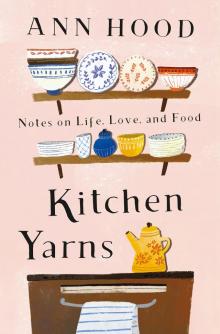 Kitchen Yarns
Kitchen Yarns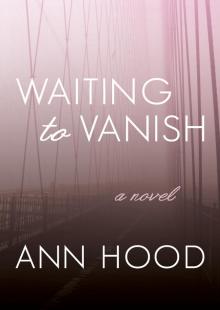 Waiting to Vanish
Waiting to Vanish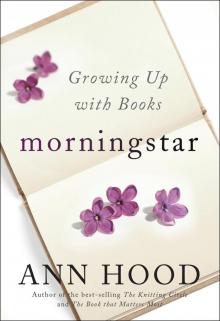 Morningstar
Morningstar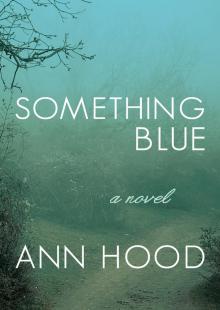 Something Blue
Something Blue Providence Noir
Providence Noir Somewhere Off the Coast of Maine
Somewhere Off the Coast of Maine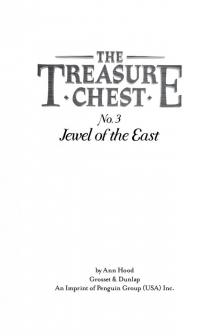 Jewel of the East
Jewel of the East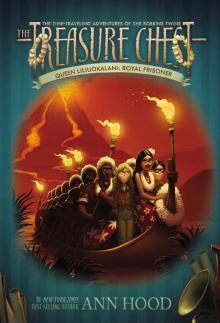 Queen Liliuokalani: Royal Prisoner
Queen Liliuokalani: Royal Prisoner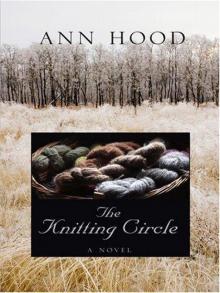 The Knitting Circle
The Knitting Circle Leonardo da Vinci: Renaissance Master
Leonardo da Vinci: Renaissance Master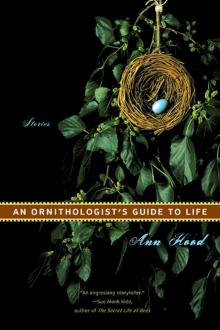 An Ornithologist's Guide to Life
An Ornithologist's Guide to Life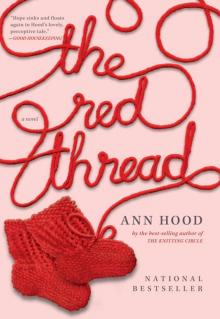 The Red Thread
The Red Thread She Loves You (Yeah, Yeah, Yeah)
She Loves You (Yeah, Yeah, Yeah)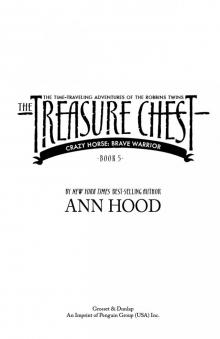 Brave Warrior
Brave Warrior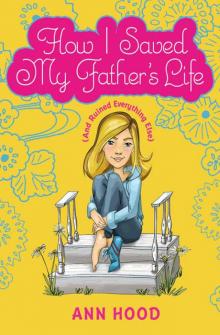 How I Saved My Father's Life (and Ruined Everything Else)
How I Saved My Father's Life (and Ruined Everything Else) An Italian Wife
An Italian Wife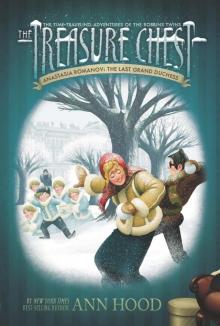 Anastasia Romanov: The Last Grand Duchess #10
Anastasia Romanov: The Last Grand Duchess #10 Prince of Air
Prince of Air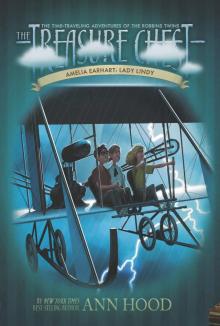 Amelia Earhart: Lady Lindy
Amelia Earhart: Lady Lindy Places to Stay the Night
Places to Stay the Night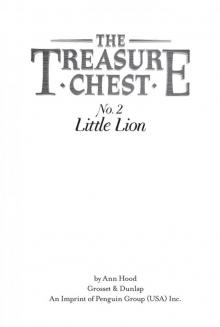 Little Lion
Little Lion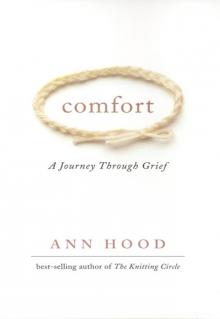 Comfort
Comfort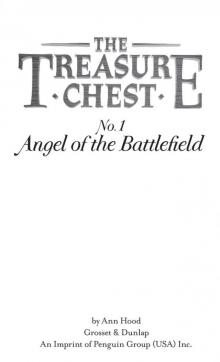 Angel of the Battlefield
Angel of the Battlefield